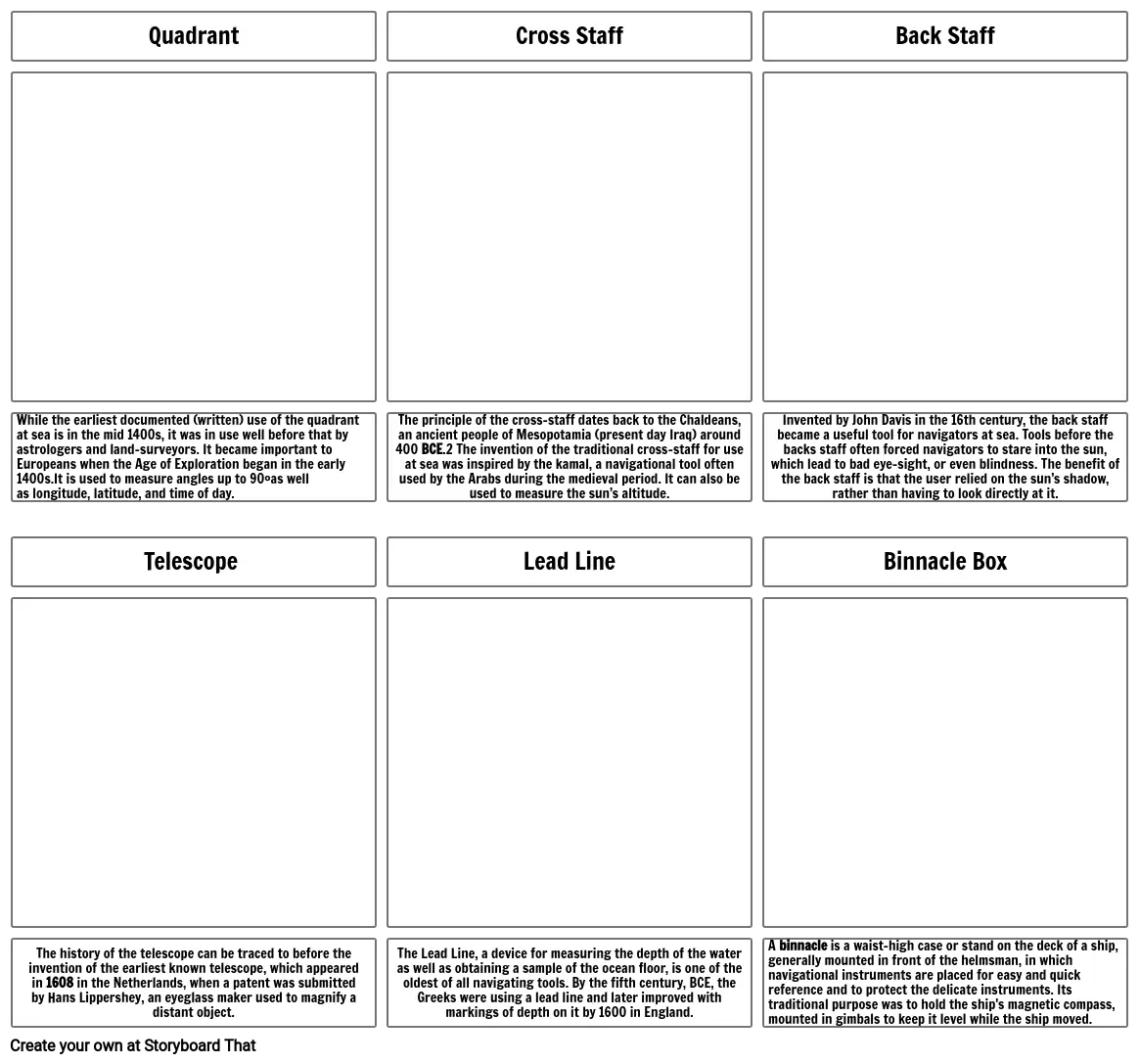TECHNOLOGIAL AND SCIENTIFIC ADVANCES IN NAVIGATION PART TWO

Storyboard Text
- Quadrant
- Cross Staff
- Back Staff
- While the earliest documented (written) use of the quadrant at sea is in the mid 1400s, it was in use well before that by astrologers and land-surveyors. It became important to Europeans when the Age of Exploration began in the early 1400s.It is used to measure angles up to 90°as well as longitude, latitude, and time of day.
- Telescope
- The principle of the cross-staff dates back to the Chaldeans, an ancient people of Mesopotamia (present day Iraq) around 400 BCE.2 The invention of the traditional cross-staff for use at sea was inspired by the kamal, a navigational tool often used by the Arabs during the medieval period. It can also be used to measure the sun’s altitude.
- Lead Line
- Invented by John Davis in the 16th century, the back staff became a useful tool for navigators at sea. Tools before the backs staff often forced navigators to stare into the sun, which lead to bad eye-sight, or even blindness. The benefit of the back staff is that the user relied on the sun’s shadow, rather than having to look directly at it.
- Binnacle Box
- The history of the telescope can be traced to before the invention of the earliest known telescope, which appeared in 1608 in the Netherlands, when a patent was submitted by Hans Lippershey, an eyeglass maker used to magnify a distant object.
- The Lead Line, a device for measuring the depth of the water as well as obtaining a sample of the ocean floor, is one of the oldest of all navigating tools. By the fifth century, BCE, the Greeks were using a lead line and later improved with markings of depth on it by 1600 in England.
- A binnacle is a waist-high case or stand on the deck of a ship, generally mounted in front of the helmsman, in which navigational instruments are placed for easy and quick reference and to protect the delicate instruments. Its traditional purpose was to hold the ship's magnetic compass, mounted in gimbals to keep it level while the ship moved.
Över 30 miljoner storyboards skapade

